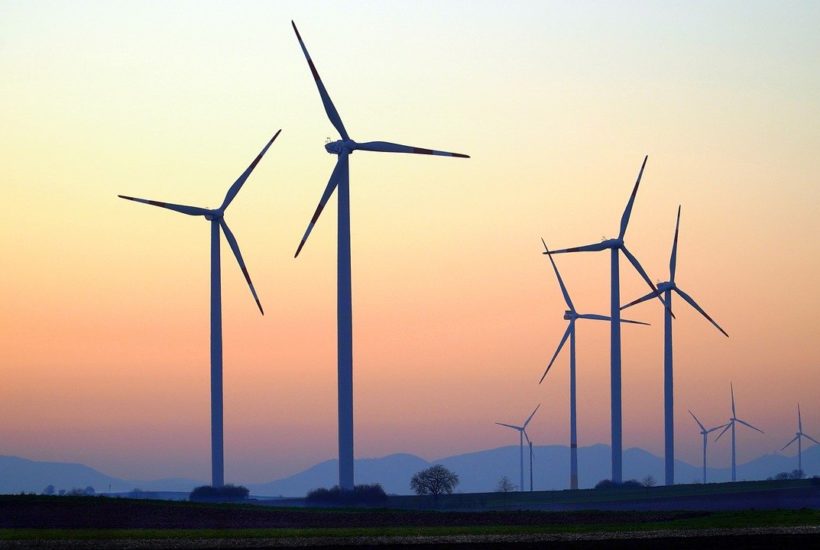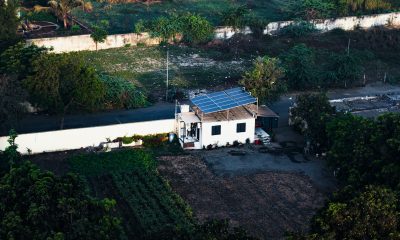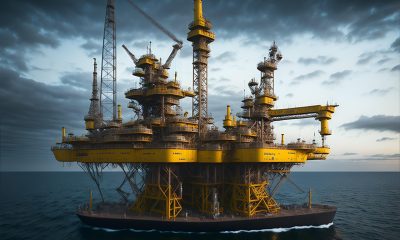Featured
The global wind power industry set a record year in 2020 with 93 GW installed
In 2020, the global wind power industry set a record, with 93 GW installed. For its part, Spain was the sixth market with the most new onshore wind capacity in 2020, with an installation of 1,400 MW, just behind China (48,940 MW), the United States (16,913 MW), Brazil (2,297 MW), Norway (1,532 MW) and Germany (1,431 MW). However, at this rate, zero emissions will not be achieved by 2050.

The global wind power industry closed 2020 as its best year ever, with a total of 93 gigawatts (GW) of new installed capacity, representing a 53% increase, despite the COVID-19 crisis.
However, the Global Wind Energy Council (GWEC) warns that this growth is not enough to ensure that the world will reach net zero by 2050.
Thus, the body estimates that the world needs to install wind power three times faster over the next decade to stay on a net-zero pathway and “avoid the worst impacts of climate change.”
Over the past decade, technological innovations and economies of scale have enabled wind to nearly quadruple in size, confirming it as one of the most cost-effective and resilient energy sources worldwide.
Last year’s record growth was driven especially by an increase in installations in China and the United States–the world’s two largest wind power markets–which together installed 75% of new installations in 2020 and accounted for more than half of the world’s total wind power capacity.
Read more on the subject and find other important finance news with our companion app Born2Invest.
Spain, 6th country with new capacity and 5th by cumulative MW
For its part, Spain was the sixth market with the most new onshore wind capacity in 2020, with an installation of 1,400 MW, just behind China (48,940 MW), the United States (16,913 MW), Brazil (2,297 MW), Norway (1,532 MW) and Germany (1,431 MW).
In terms of accumulated capacity, it is the fifth largest market, with a total of 27,238 MW, behind China (278,324 MW), the United States (122,275 MW), Germany (55,122 MW) and India (38,625 MW).
Thus, currently, the installed wind power capacity worldwide reaches 743 GW, contributing to avoid more than 1.1 billion tons of carbon dioxide (CO2), which is equivalent to the annual carbon emissions of South America, according to GWEC data.
Pace of 280GW per year
However, according to scenarios established by international energy agencies such as Irena and IEA, it would be necessary to install at a minimum rate of 180 GW of new wind power each year to limit global warming to well below 2°C above pre-industrial levels, and up to 280 GW per year would need to be installed to maintain a pathway that meets net zero by 2050.
Thus, GWEC calls on policymakers to take a true “climate emergency” approach to enable a faster ramp-up, with measures such as eliminating red tape and reforms to administrative structures in order to speed up and streamline the licensing and permitting of projects.
In addition, he sees the need for a massive increase in grid, port and other infrastructure investments needed to enable the scale-up of installations, as well as the modernization of energy markets to ensure that they represent the true social costs of polluting fossil fuels and facilitate a rapid transition to a renewable energy-based system.
__
(Featured image by matthiasboeckel via Pixabay)
DISCLAIMER: This article was written by a third party contributor and does not reflect the opinion of Born2Invest, its management, staff or its associates. Please review our disclaimer for more information.
This article may include forward-looking statements. These forward-looking statements generally are identified by the words “believe,” “project,” “estimate,” “become,” “plan,” “will,” and similar expressions. These forward-looking statements involve known and unknown risks as well as uncertainties, including those discussed in the following cautionary statements and elsewhere in this article and on this site. Although the Company may believe that its expectations are based on reasonable assumptions, the actual results that the Company may achieve may differ materially from any forward-looking statements, which reflect the opinions of the management of the Company only as of the date hereof. Additionally, please make sure to read these important disclosures.
First published in elEconomista.es, a third-party contributor translated and adapted the article from the original. In case of discrepancy, the original will prevail.
Although we made reasonable efforts to provide accurate translations, some parts may be incorrect. Born2Invest assumes no responsibility for errors, omissions or ambiguities in the translations provided on this website. Any person or entity relying on translated content does so at their own risk. Born2Invest is not responsible for losses caused by such reliance on the accuracy or reliability of translated information. If you wish to report an error or inaccuracy in the translation, we encourage you to contact us.

-

 Crypto1 week ago
Crypto1 week agoXRP vs. Litecoin: The Race for the Next Crypto ETF Heats Up
-

 Biotech5 days ago
Biotech5 days agoSpain Invests €126.9M in Groundbreaking EU Health Innovation Project Med4Cure
-

 Crypto2 weeks ago
Crypto2 weeks agoRipple Launches EVM Sidechain to Boost XRP in DeFi
-

 Biotech1 day ago
Biotech1 day agoAdvancing Sarcoma Treatment: CAR-T Cell Therapy Offers Hope for Rare Tumors
























